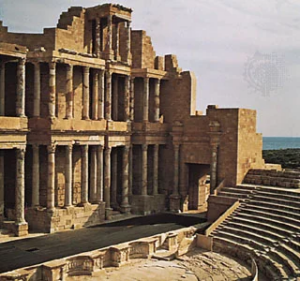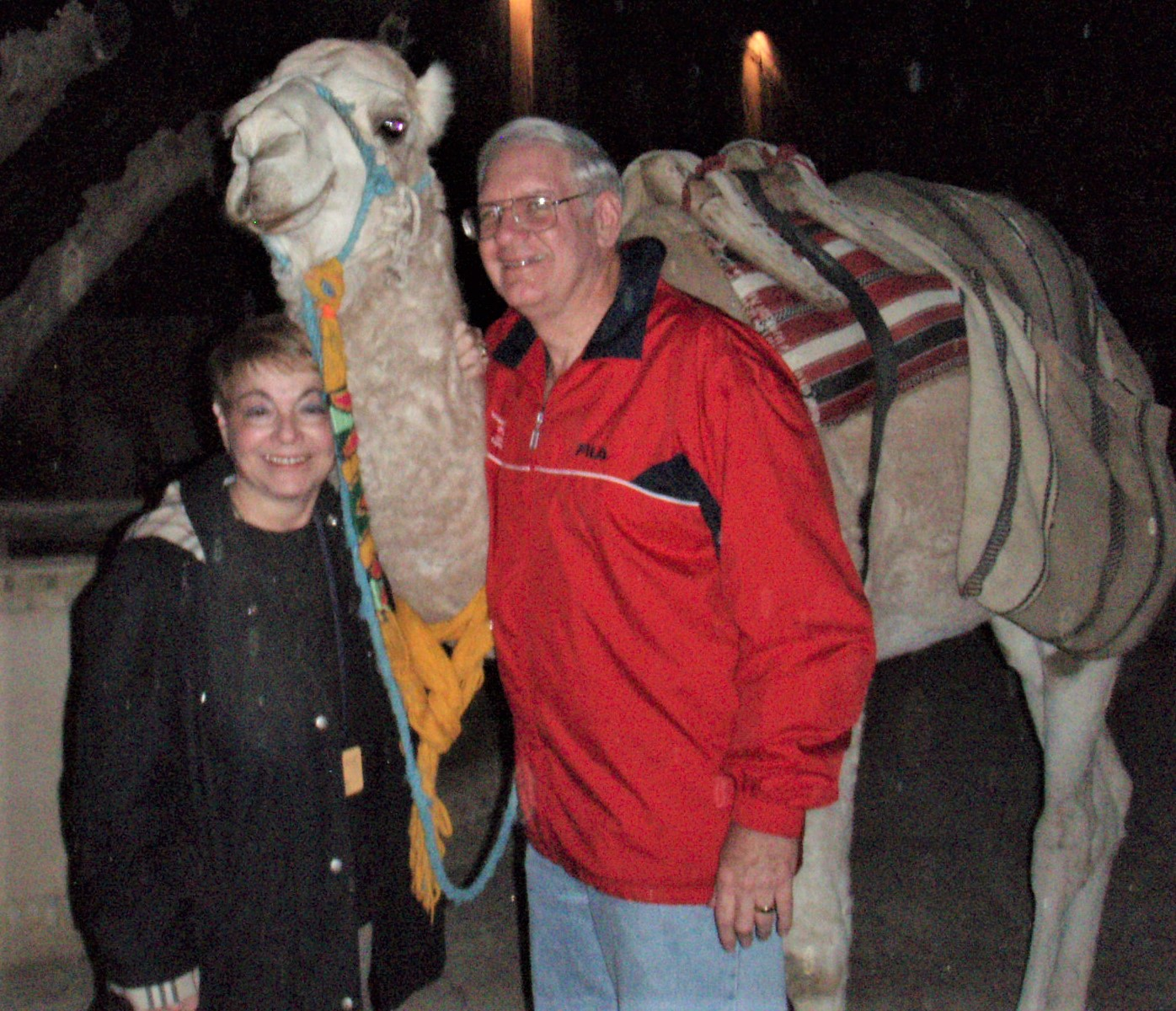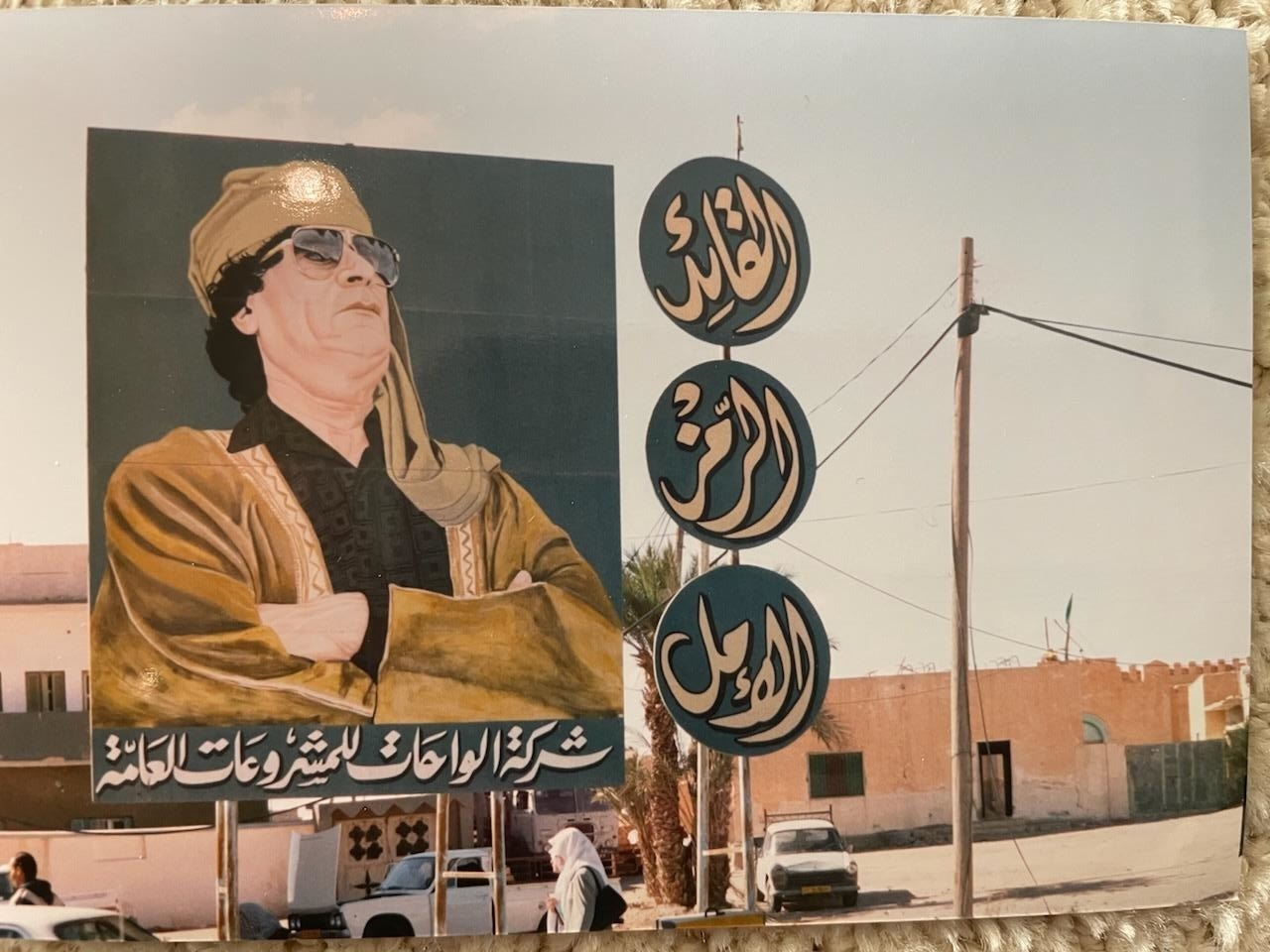Libya (2008)
Armenia and Nagorno Karabakh (2000)
August 2, 2022Exploring the Upper Amazon (1975)
November 13, 2023Libya (2008)
by Rich Juro
Fran and I had an exciting two week trip to Libya in 2008. This was earlier than Colonel Qaddafi’s ouster in 2011 and before Libya became a non-functioning nation. At the time, cruises couldn’t stop there. So we flew in to Tripoli, the capital of one million people, and stayed in a modern hotel. That was the last routine thing we did.
One thing that US history buffs know is that after the Revolutionary War, the first foreign escapade was here. In 1801, tired of paying ransom to the Barbary pirates, President Thomas Jefferson sent a military expedition to Tripoli. Unfortunately, the naval ship USS Philadelphia ran aground and was captured. After another American armed services force was dispatched, the Tripoli pasha was forced to give up his annual bounty (though he did receive $60,000 for the return of the Philadelphia’s sailors).

We met our fellow guests and tour leader. She was Yvonne, a big, brassy, blond from Austria, who spoke Arabic and wouldn’t take crap even from the machismo Arabs. Our fellow-adventurers were a dozen or so, mostly Americans. Because it was modern, the hotel was half-filled with diplomats. Many of them were Swiss, busy doing whatever the American administration wanted (at the time the USA didn’t have diplomatic relations with Qaddafi or his government).
One day we spent visiting Leptis Magna. It was founded as a Phoenician city, but the Roman Emperor Septimus Severus grew up there, and so naturally he built it up when he succeeded to the throne. Now it is reputedly the best preserved large Roman site. Amazingly, it was virtually empty when we toured Leptis Magna.

We flew south down in a small plane to a town in the midst of the Libyan desert. It was dramatically sandy, especially in our tent. One of the other couples were named Paul and Mary. Paul was one of the most fastidious people I’ve ever met. He wore pressed pants and a clean white shirt every day. He refused to get on the camel, but Mary had long yearned to go. She mounted the camel with help of the locals. Paul wanted to get a picture of Mary on the dromedary. He stood in front of the camel and aimed his camera. Just then, the animal vomited; it went all over Paul’s immaculate shirt. Paul was the worst person who could be the target of the camel. We didn’t know for sure if the camel did it on purpose or not.
Fran and Rich with their Camel (the beast is in the middle).

The food was surprisingly good, except for the camel meat. It was all fresh, but the meat was gristly and chewy at best. We don’t think we ate the camel that violated Paul. He was too valuable for riding to cook and eat.
After a couple of days in the desert, we flew up to Benghazi, Libya’s second major city. It was founded as an ancient Greek settlement. Benghazi was the co-capital until Qaddafi became Libya’s ruler and made Tripoli the sole capital. The anti-Qaddafi revolutionaries may have started here in 2011. Now Benghazi was infamous for the 2012 al-Queda attack on the American diplomatic mission that killed the US Ambassador and several other Americans. But that was several years before our tour group got there.

After visiting Benghazi we were supposed to fly back to Tripoli. But a sandstorm was approaching, and the next day it was the Islamic holiday when all flights were suspended. At the airport, our tour leader, Yvonne, demanded that the group be allowed to board the plane and fly over the sirocco. Finally, the officials acceded to Yvonne’s repeated requests, and we flew back to the capital.
Just a few years later, the revolt against Qaddafi began. His despotic rule was 42 years, from 1969-2011. Later the all green flag that he instituted was replaced by another. When we were in Libya, Fran insisted on my buying one of my all-time souvenirs: a watch with Qaddafi’s face on it. It stopped working about the time that Qaddafi was killed by insurgents, but I still have the watch.
